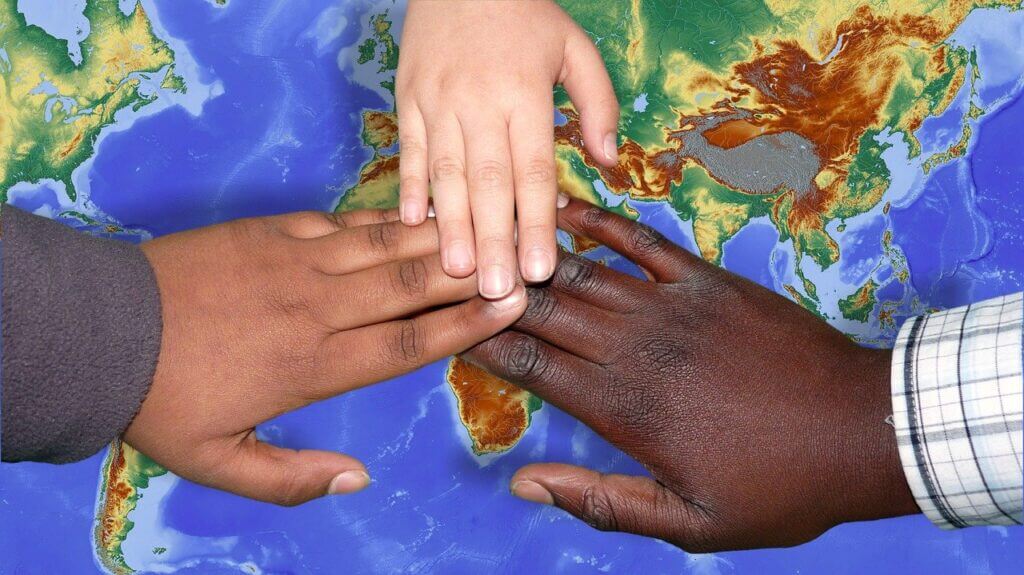We are less when we don’t include everyone. –Stuart Milk, Global human rights advocate
Diversity has been the thing for a while now. Tourism, mass migration and the internet has made the world smaller and so much more connected, exposing us to different cultures, languages, cuisines, information and endless possibilities.
Successful organizations encourage diversity in the workforce as countless studies show that it drives performance, innovation and creates new markets. It is considered just the right thing to do. Governments have integration programs to encourage successful assimilation to their societies.
While the need for diversity is easy to fulfill (it’s just about putting different cultures in a room, right?), where organizations and governments fail is how to get the mix to actually work together.
“Many organizations and companies today track diversity in sex, gender, race, ethnicity, sexual orientation and religion, among other factors. For some of their leaders, numerical diversity is seen as the most important — and at times, the only — thing needed to create a varied and vibrant community. But by focusing on headcount, they are making the mistake of believing that diversity and inclusion are the same.” – Dolly Chugh, social psychologist and expert in the unconscious biases and unethical behavior of ordinary, good people
What inclusion is
But what is inclusion anyway? Isn’t it an automatic by-product of diversity and isn’t it the same as integration?
A social scientist described diversity as being invited to a party while inclusion is being asked to dance.
ESSEC Business School’s Junko Takagi explained the concepts of integration and inclusion in Coursera’s Diversity and Inclusion in the Workplace as:
“Integration refers to bringing diverse elements into the organization and helping to make them feel comfortable within the shared organizational culture. In other words, treat others as you want to be treated yourself. Inclusion takes into account the identities and preferences of individuals, so that they are able to excel and contribute towards collective organizational objectives. This may be rephrased as treat others as they want to be treated.”
Janet Stoval below expounded that diversity is about the numbers while inclusion is about impact.
The barriers to inclusion
If companies with a diverse workforce perform more than 30% better than those that are not, why are there only 5% of women CEOs and 3 black CEOs in the list of Fortune 500 companies?
One of the reasons is unconscious bias. During the Women in Leadership Conference at the Erasmus University in 2018, challenging one’s biases and being aware about one’s privileges seemed to be the overarching theme. Eastman’s David Golden mentioned the system in the society we live in as built by privileged men. Since your network will look a lot like you, opportunities stay in the same network making it a barrier to diversity and ultimately, inclusion.
In Prof. Semiha Denktas’ Navigating double bias: Ethnicity and Gender workshop, the conclusion is that the general perception of one’s ethnicity denies some of the participants to bring their whole selves to work.
How we can be more inclusive
Erasmus University’s Kristel Baele urges everyone to test their assumptions and biases as a step further to being more inclusive. Harvard University’s Project Implicit helps you realize what your blind spots are. Take it and be prepared to be surprised.
You can also follow some online courses. In my journey towards understanding diversity and inclusion, I found the following quite enlightening:
- https://www.linkedin.com/learning/paths/become-an-inclusive-leader
- https://www.coursera.org/learn/diversity-inclusion-workplace
- https://www.catalyst.org/knowledge/why-diversity-and-inclusion- matter
In other words
Diversity is easy. Inclusion is a challenge. Without inclusion, we cannot reap the true benefits of diversity. So they go hand in hand.
How about we work towards more inclusion in our surroundings? Begin where you are planted. Start moving your feet today.#
Sources
- Baele, K. (2018). Women in leadership conference. Rotterdam. Erasmus University
- Catalyst, (2018). Why diversity and inclusion matter. Available at: https://www.catalyst.org/knowledge/why-diversity-and-inclusion-matter
- Chavez, C. Weisinger, J. (2008). Beyond diversity training: A social infusion for cultural inclusion. Human Resource Management, 47, 331-350.
- Coursera, (2017). Diversity and Inclusion in the Workplace. Available at: https://www.coursera.org/learn/diversity-inclusion-workplace
- Denktas, S. (2018). Navigating double bias: Ethnicity and Gender. Women in leadership conference. Rotterdam. Erasmus University
- Golden, D. (2018). Women in leadership conference. Rotterdam. Erasmus University
- Fortune, (2018). Only Three Black CEOs in the Fortune 500. Available at: http://fortune.com/2018/03/01/raceahead-three-black-ceos/
- LinkedIn, (2017). Become an inclusive leader. Available at: https://www.linkedin.com/learning/paths/become-an-inclusive-leader
- Stovall, J. (2018). How to get serious about diversity and inclusion in the workplace. TED Talks. Available at: https://www.ted.com/talks/janet_stovall_how_to_get_serious_about_diversity_and_inclusion_in_the_workplace/
- Wikipedia. List of women CEOs of Fortune 500. Available at: https://en.wikipedia.org/wiki/List_of_women_CEOs_of_Fortune_500_companies



